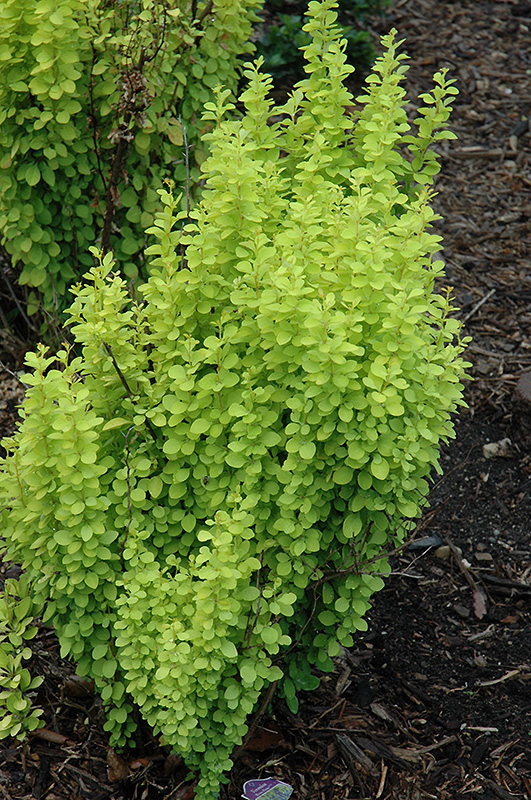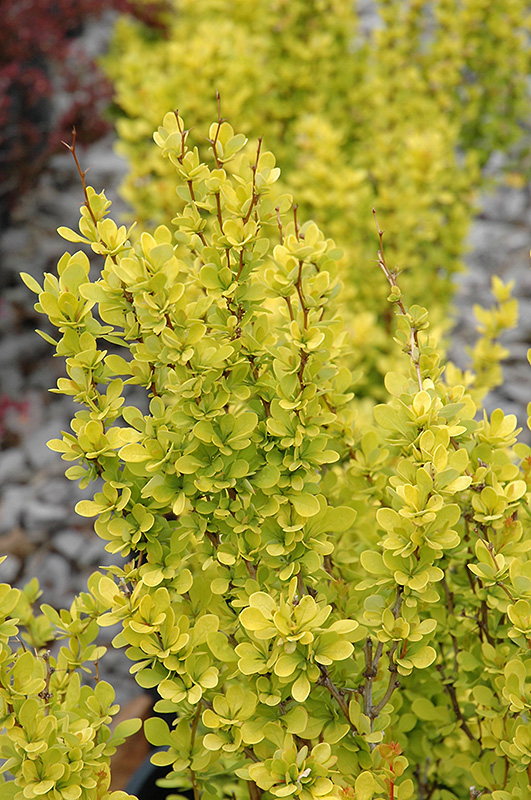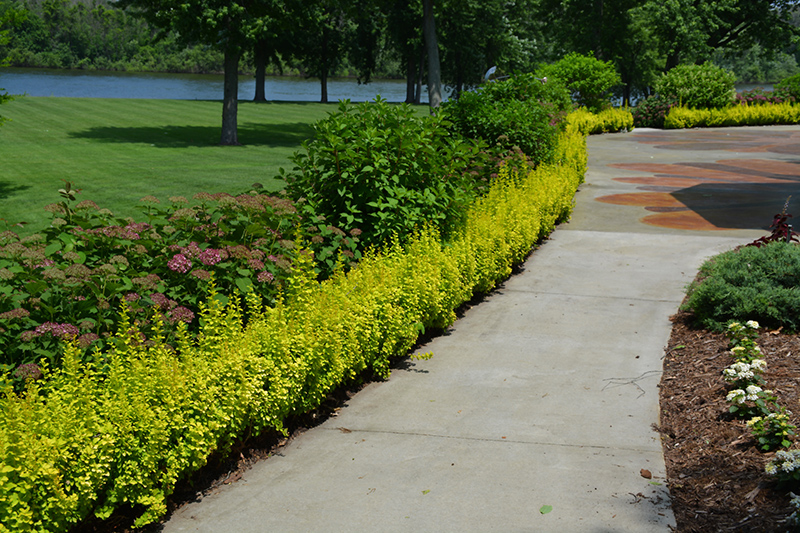Sunjoy Gold Pillar Japanese Barberry
Berberis thunbergii 'Maria'
Height: 4 feet
Spread: 4 feet
Sunlight:
![]()
![]()
Hardiness Zone: 4a
Description:
A notably upright shrub with golden foliage all summer long, turning to brilliant orange-red in fall; very showy, great as a color contrast in the landscape; plant on slopes, in beds, as border; best time to prune is May-July
Ornamental Features
Sunjoy Gold Pillar Japanese Barberry is primarily grown for its highly ornamental fruit. The fruits are showy red drupes carried in abundance . It has attractive gold deciduous foliage which emerges red in spring. The small oval leaves are highly ornamental and turn an outstanding scarlet in the fall. It has clusters of yellow flowers hanging below the branches , which are interesting on close inspection.
Landscape Attributes
Sunjoy Gold Pillar Japanese Barberry is a dense multi-stemmed deciduous shrub with a narrowly upright and columnar growth habit. Its relatively fine texture sets it apart from other landscape plants with less refined foliage.
This shrub will require occasional maintenance and upkeep, and can be pruned at anytime. Deer don't particularly care for this plant and will usually leave it alone in favor of tastier treats. It has no significant negative characteristics.
Sunjoy Gold Pillar Japanese Barberry is recommended for the following landscape applications;
- Mass Planting
- Hedges/Screening
- General Garden Use
Planting & Growing
Sunjoy Gold Pillar Japanese Barberry will grow to be about 4 feet tall at maturity, with a spread of 4 feet. It tends to fill out right to the ground and therefore doesn't necessarily require facer plants in front. It grows at a medium rate, and under ideal conditions can be expected to live for approximately 20 years.
This shrub does best in full sun to partial shade. It is very adaptable to both dry and moist growing conditions, but will not tolerate any standing water. It is not particular as to soil type or pH, and is able to handle environmental salt. It is highly tolerant of urban pollution and will even thrive in inner city environments. This is a selected variety of a species not originally from North America.




